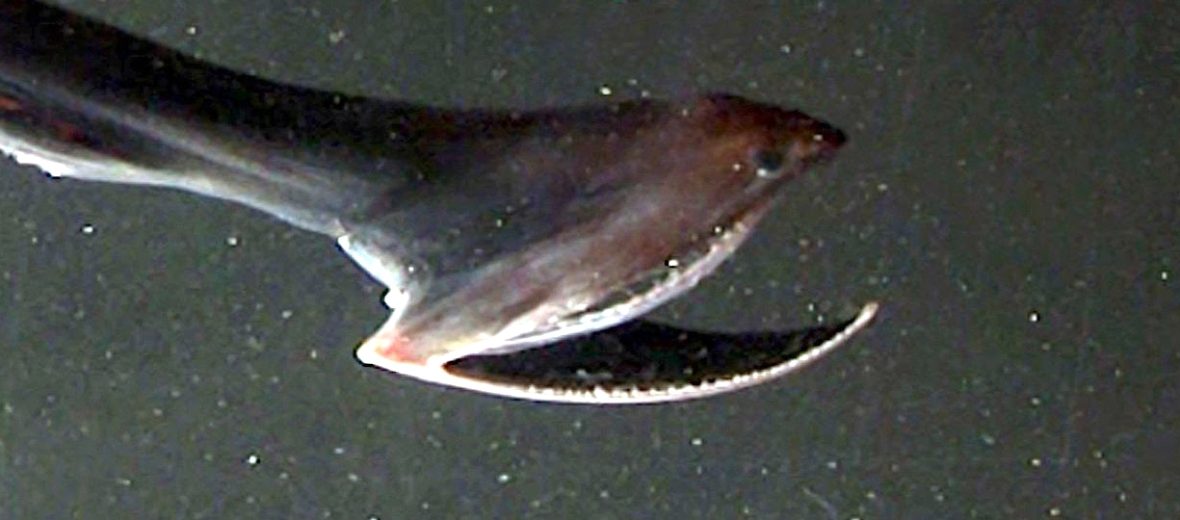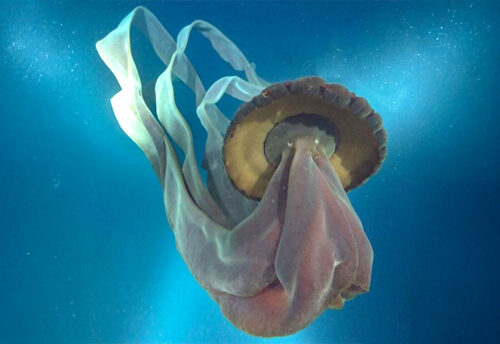
The pelican eel, aka pelican gulper, gulper eel, or umbrella-mouth gulper, can be found in the temperate and tropical areas of the world’s oceans. They are found at depths of up to 3,786 feet. So far, these critters are the only known member of the genus Eurypharynx and the family Eurypharyngidae. With a global distribution, but uncertain numbers, they are currently listed as Least Concern by the IUCN. They most likely face the threats of climate change and pollution. This article is on special request from Hope.
First the Stats…
Scientific name: Eurypharynx pelecanoides
Weight: Up to 44.09 lbs.
Length: Up to 3.2 feet
Lifespan: Up to 85 years
Now on to the Facts!
1.) These critters are categorized as true eels, along with the moray eel, American eel, and others.
2.) Their mandible and upper jaw are wider than their head and are lined with tiny but razor-sharp teeth.
3.) They are able to swallow prey much larger than themselves.
4.) Small fish, shrimp, and crustaceans are all on the menu. They are also known to be scavengers.
5.) As they mature, males gain larger eyes and olfactory organs. Females do not change.
But wait, there’s more on the pelican eel!
6.) These eels are among the few deep sea creatures who have been well studied.
7.) Most of the information gathered on these critters has been from samples taken from the ocean, but they don’t live long outside of the immense pressures they’re accustomed to.
Did you know…?
Pelican eels have a bioluminescent organ located at the tip of their tail that aids in attracting prey.
8.) It was once thought that these creatures were ambush predators. It was later determined that they actively pursue prey.
9.) Until they reach the juvenile stage of life, the young have tiny body organs and don’t have any red blood cells.
10.) In 1 studied male, the testes occupied most of the space in the stomach cavity and the stomach had seemed to have shrunk in size as a result.
11.) Reproduction takes place later in life and the parents typically die shortly after reproducing.
Now a Short Pelican Eel Video!
Be sure to share & comment below! Also, check out the Critter Science YouTube channel. Videos added regularly!
Want to suggest a critter for me to write about? Let me know here.



